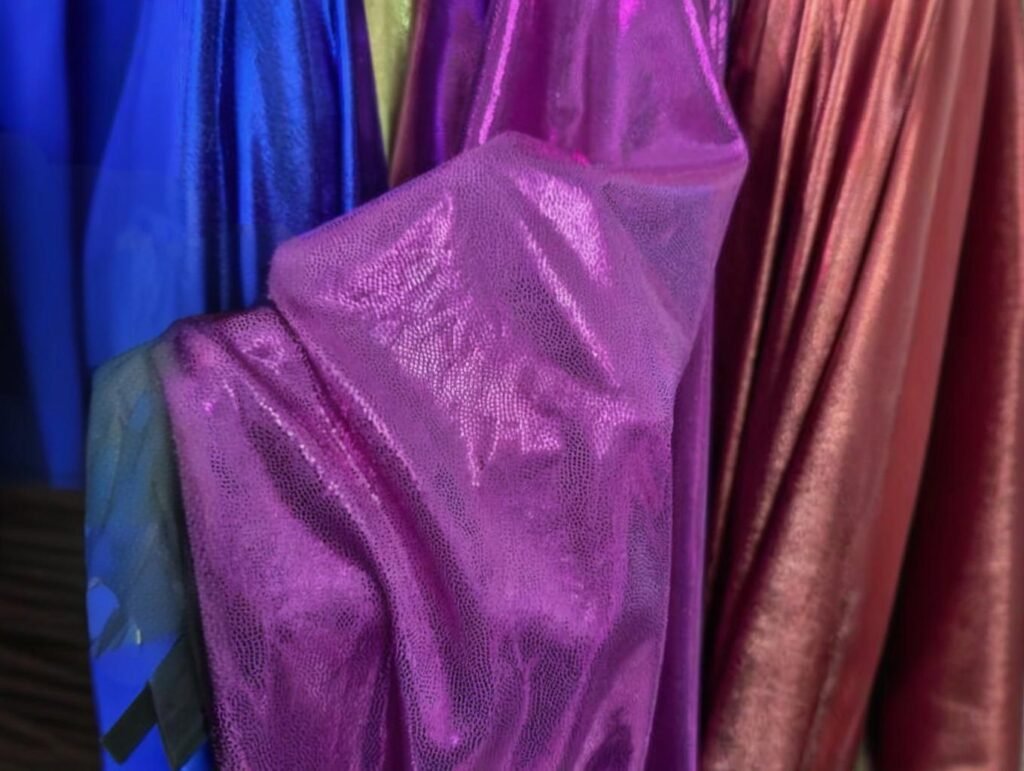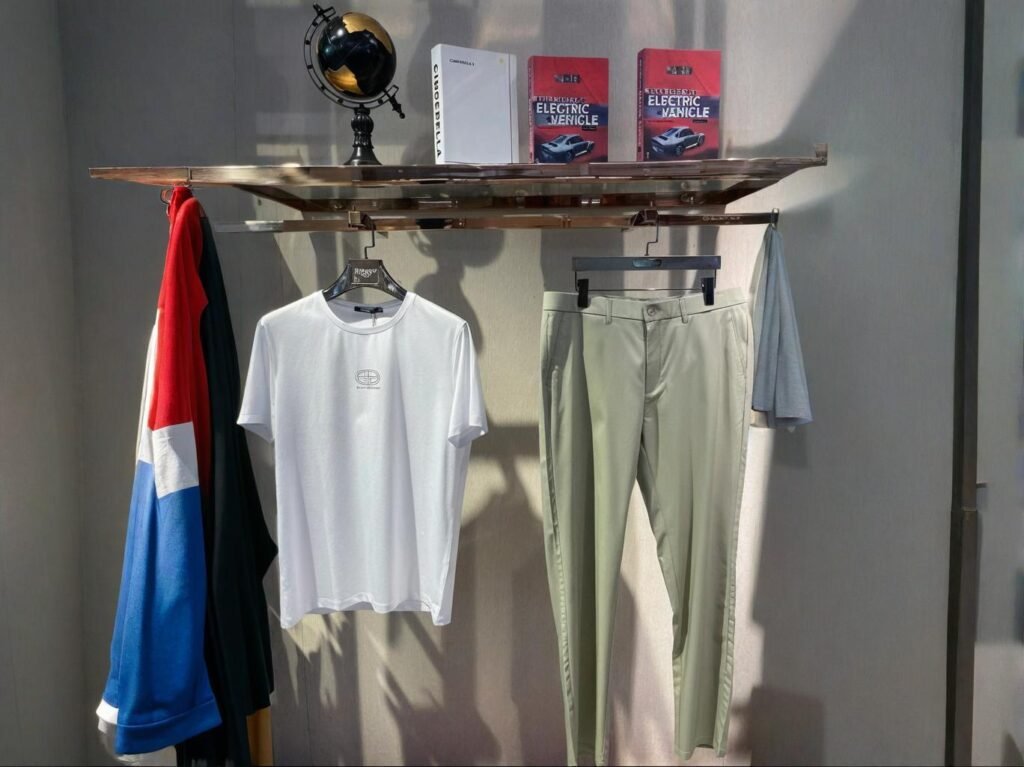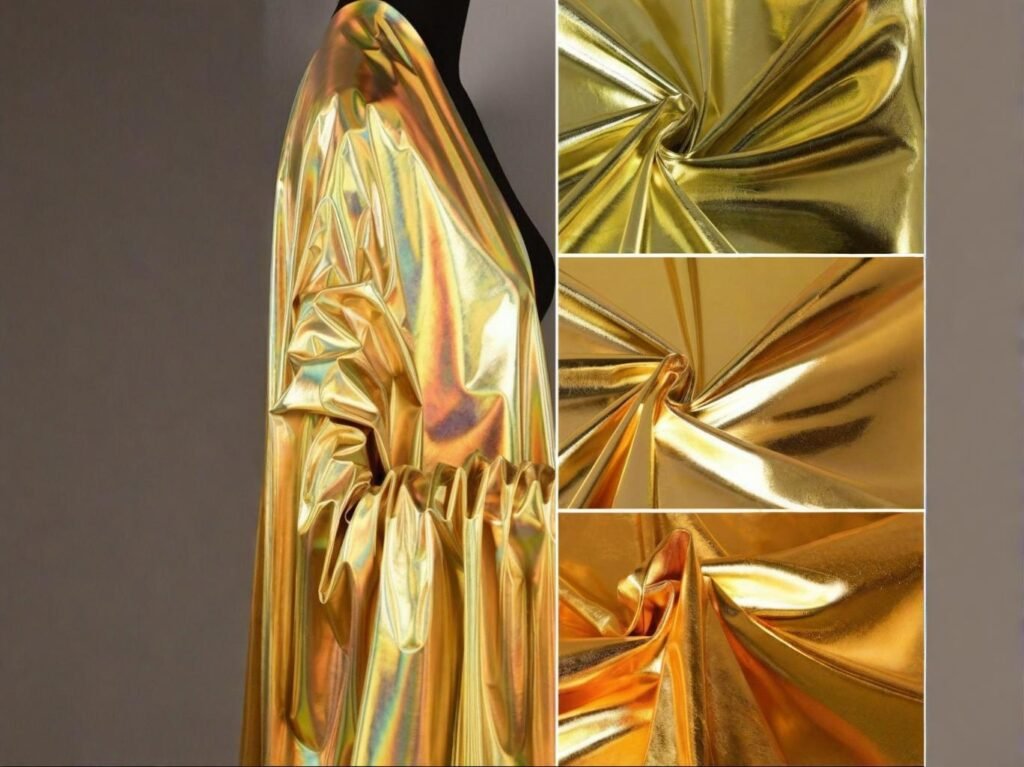
Whether you’re sourcing for leggings, loungewear, kidswear, or premium fashion, cotton spandex fabric is a go-to choice for comfort, elasticity, and durability. Yet in 2024, textile sourcing is no longer just about price and MOQ — it’s about certified safety, technical performance, sustainable compliance, and reliability. With growing pressure from global buyers, brands are demanding fabrics that are not only high-quality but also OEKO-TEX certified, ensuring they meet rigorous environmental and safety standards.
The best cotton spandex fabric suppliers in 2024 are OEKO-TEX certified, technically competent, offer low MOQ customization, and are equipped to serve fast-moving brands globally.
A few years ago, a mid-sized sportswear startup in Australia sourced what appeared to be a “bargain” cotton-spandex roll from an uncertified supplier. The result? Over 30% shrinkage, allergic reactions in users due to residual chemicals, and a product recall. This story is not unique. And it’s exactly why we’ve compiled a vetted, data-backed list of the top 10 OEKO-TEX certified cotton spandex fabric manufacturers in 2024 — so you don’t have to learn the hard way.
Let’s dive into what makes a supplier worth your business — and who’s dominating the market this year.
What Makes a Cotton Spandex Fabric Supplier Truly Reliable in 2024?
A truly reliable cotton spandex supplier in 2024 must combine technical performance, global certification (such as OEKO-TEX), flexible MOQs, consistent QC standards, and export-readiness. It’s not just about delivering fabric; it’s about delivering a risk-free supply chain experience for brands scaling fast.
Reliable cotton spandex fabric suppliers in 2024 meet OEKO-TEX standards, offer lab-tested quality, flexible MOQ, consistent lead times, and responsive communication.
Key Reliability Factors
a. OEKO-TEX Certification & Chemical Compliance
- Must comply with STANDARD 100 by OEKO-TEX, covering over 100 banned substances
- Verification ensures fabrics are safe for skin contact, especially for children and activewear users
- Many top suppliers also hold ZDHC, GOTS, and REACH certifications
b. Production & Testing Capabilities
| Key Metric | Standard Value for Reliable Suppliers |
|---|---|
| Shrinkage After 5 Washes | ≤ 5% |
| Colorfastness to Rubbing (Dry) | ≥ Grade 4 |
| Pilling Resistance (Martindale) | ≥ Grade 3.5 |
| Stretch Recovery (90/10 blends) | ≥ 90% |
| Fabric GSM Tolerance | ±5% across batch |
c. MOQ & Sampling Flexibility
- MOQ as low as 100 meters per color for trial orders
- Free or low-cost lab dips and physical samples
- Prototype delivery within 7–10 days
d. Communication & Logistics Support
- 24h response SLA via email/WhatsApp
- Bilingual export documentation
- Experience working with FOB/CIF/DDU shipping to North America, EU, Australia, and Japan
Which Global Regions Dominate Cotton Spandex Fabric Manufacturing?
In 2024, the global cotton spandex production landscape is led by China, India, Turkey, South Korea, and Vietnam. Each region brings unique advantages in terms of cost structure, compliance, fabric aesthetics, and shipping times.
China, India, Turkey, and South Korea lead the cotton spandex fabric market in 2024, offering competitive pricing, OEKO-TEX compliance, and flexible custom development.
Regional Profiles & Advantages
a. China: The Global Customization Hub
- Strengths: Low MOQ, fast sampling, full OEKO-TEX compliance
- Key Players: SzoneierFabrics, Wujiang Hengli, Shaoxing Keqiao OEMs
- Lead Time: 7–15 days for sampling, 20–30 days for production
- Challenge: IP protection concerns (if NDA not in place)
b. India: Organic Cotton + Value-Added Dyeing
- Strengths: Access to GOTS-certified cotton, eco dyeing
- Key Players: Arvind, KG Fabriks, Bhaskar Denim (stretch series)
- Specialization: 92/8 and 95/5 blends with brushed finishes
- Challenge: Slightly longer delivery lead time (35–45 days)
c. Turkey: Proximity to Europe, Mid-MOQ Specialist
- Strengths: Quick shipping to EU, premium quality
- Common Clients: European DTC brands
- MOQ Range: 300–500 meters
d. South Korea: Premium Fabric Tech Innovators
- Known for developing cool touch, odor-resistant, antibacterial spandex knits
- Ideal for luxury activewear brands and medical-grade stretchwear
e. Vietnam: Strategic for U.S. Buyers Avoiding Tariffs
- Preferred for yarn-forward rules under U.S. FTAs
- Hybrid supply chains (raw cotton from U.S., spinning and finishing in Vietnam)
How Does OEKO-TEX Certification Ensure Safer Cotton Spandex Fabrics?

OEKO-TEX certification, particularly STANDARD 100, is the gold standard for ensuring that cotton spandex fabrics are free from harmful chemicals, allergens, and skin irritants. The certification process involves rigorous lab testing of not only the fabric itself but also dyes, threads, elastane components, and even coating agents.
OEKO-TEX certification guarantees that cotton spandex fabrics are free from toxic chemicals and allergens, making them safe for apparel, especially children’s and activewear.
What OEKO-TEX Tests and Why It Matters
a. Chemical Bans and Safety Thresholds
| Chemical Class | Tested For | Limit (mg/kg) |
|---|---|---|
| Formaldehyde | Skin irritant and allergen | ≤ 16 |
| Azo Dyes | Potentially carcinogenic | Not detectable |
| Phthalates (plasticizers) | Common in synthetic fibers, endocrine risk | ≤ 1000 |
| Heavy Metals (Pb, Hg, Cd) | Toxin accumulation | ≤ 1 |
| Chlorinated Phenols | Bioaccumulative toxins | Not detectable |
b. Who Needs OEKO-TEX Most?
- Babywear: Direct skin contact for extended periods
- Activewear: High perspiration increases chemical absorption
- Underwear & Sleepwear: Long-term skin exposure
c. OEKO-TEX Beyond Chemicals: Social & Environmental Dimensions
- STANDARD 100 is focused on chemical safety
- MADE IN GREEN by OEKO-TEX adds sustainability and traceability
- Certification can improve B2B credibility and help pass brand audits
One European fashion brand rejected 3,000 meters of non-OEKO-TEX spandex fabric after testing revealed high levels of residual formaldehyde. The replacement cost exceeded \$14,000 in re-sampling and lost production time. A certified supplier could have prevented this entirely.
What Are the Key Technical Specifications Buyers Should Compare?
When sourcing cotton spandex, it’s not enough to just compare GSM or stretch percentage. Professional buyers need to evaluate a combination of mechanical, visual, and chemical specifications to ensure the fabric matches their garment’s performance needs.
Key technical specs to compare include GSM, spandex ratio, stretch recovery rate, colorfastness, pilling resistance, shrinkage, and chemical compliance.
Fabric Properties That Impact Performance
a. GSM (Grams per Square Meter)
| Application | Ideal GSM Range |
|---|---|
| Yoga leggings | 260–300 |
| Summer t-shirts | 160–180 |
| Tank tops & basewear | 180–220 |
b. Blend Ratio
- 95% cotton / 5% spandex: High breathability, moderate stretch
- 92% cotton / 8% spandex: Better shape retention, ideal for sportswear
- 90/10 or 85/15: Higher compression (e.g., shapewear, maternity wear)
c. Stretch & Recovery Rate
| Spec | Recommended Value |
|---|---|
| 4-way stretch (crosswise) | 100–130% |
| Recovery after stretch | ≥ 90% |
| Elastic fatigue resistance | ≥ 30 cycles |
d. Pilling Resistance (Martindale Test)
- For activewear and kidswear, ≥ Grade 4 is essential
- Lower grades cause fuzzing after washing or wear
e. Shrinkage
- Acceptable rate: ≤ 5% after 3 washes at 40°C
- Pre-shrunk or compacted finishes are highly valued by brands
Quick Checklist for Fabric Comparison
- ✅ OEKO-TEX Certification
- ✅ Shrinkage Test Report
- ✅ GSM & Blend Ratio
- ✅ Colorfastness (to rubbing, washing, perspiration)
- ✅ Lead time & MOQ flexibility
- ✅ Country of Origin compliance documents
Who Are the Top 10 OEKO-TEX Certified Cotton Spandex Suppliers in 2024?

Choosing a trustworthy supplier means balancing quality, compliance, responsiveness, and innovation. We’ve researched and verified 10 reputable OEKO-TEX certified manufacturers for cotton spandex fabric in 2024, ideal for B2B buyers sourcing globally.
These 10 OEKO-TEX certified manufacturers offer consistent quality, customization capabilities, and compliance documentation, making them top choices for sourcing cotton spandex fabric in 2024.
Top 10 OEKO-TEX Certified Cotton Spandex Fabric Suppliers (2024 Edition)
| Supplier Name | Country | Key Strengths | MOQ | Certifications |
|---|---|---|---|---|
| SzoneierFabrics | China | Custom R\&D, fast sampling, low MOQ, OEKO-TEX | 50 meters | OEKO-TEX, ISO9001 |
| Loyal Textiles | India | Organic & sustainable blends | 300 kg | OEKO-TEX, GOTS |
| Texhong Textile Group | China | Large-scale spandex yarn-dyeing capabilities | Bulk only | OEKO-TEX, ISO14001 |
| Santoni S.p.A. | Italy | High-end circular knit solutions | 200 meters | OEKO-TEX, REACH |
| Esquel Group | China/HK | Vertical integration, premium brands supplier | 500 meters | OEKO-TEX, BCI, WRAP |
| Orta Anadolu | Turkey | Innovation-focused, Lycra-certified | 300 meters | OEKO-TEX, GRS |
| Pacific Textiles | China/Vietnam | Fast fashion manufacturing network | 500 kg | OEKO-TEX, ISO9001 |
| Chia Her Industrial Co. | Taiwan | Rich knitwear options, color stability focus | 150 meters | OEKO-TEX, bluesign |
| Woojin Textile | South Korea | Technical textiles, antibacterial fabrics | 100 meters | OEKO-TEX, ISO13485 |
| Huafu Fashion | China | Melange yarn specialist, color consistency | 1000 kg | OEKO-TEX, C2C Silver |
Tips for Vetting These Suppliers:
- Always ask for the OEKO-TEX certificate PDF (check date and scope).
- Request shrinkage, GSM, and stretch test reports with any quotation.
- Look for manufacturers who offer R\&D partnerships, not just stock supply.
Are Low MOQ and Custom Design Services Available from Leading Suppliers?
Yes, but it depends on the supplier’s production setup. Some leading manufacturers like SzoneierFabrics and Chia Her specialize in flexible MOQ models, which is ideal for small-to-medium fashion brands and DTC startups.
Low MOQ and customization are increasingly offered by top cotton spandex fabric suppliers, especially in China and Taiwan, thanks to digital dyeing and agile knitting processes.
MOQ & Customization Capabilities Comparison
a. Typical MOQ Ranges by Region
| Region | MOQ (Meters) | MOQ Flexibility |
|---|---|---|
| China | 50–300 | High (some start at 50m) |
| India | 200–500 | Moderate |
| Europe (Italy) | 100–500 | Low (high-end focus) |
| Turkey | 300–800 | Moderate |
b. Customization Options Offered
- Color matching: Pantone or fabric swatch-based
- Blend ratio modification: Adjusting cotton/spandex % (e.g., 92/8, 90/10)
- Knitting types: Rib, jersey, interlock, brushed
- Functional finishes: Antibacterial, UV protection, moisture-wicking
c. Real Case Study:
A U.S.-based boutique yoga wear brand worked with SzoneierFabrics to develop a 92/8 cotton spandex brushed fabric, pre-shrunk and peach-finished. With just 100 meters, they were able to test their capsule line in 3 colorways, later scaling up after market validation.
How Do These Top Suppliers Handle Quality Control and Testing?

Reliable cotton spandex fabric suppliers implement rigorous quality control processes at every production stage—from yarn selection to final fabric finishing. The goal is to ensure consistent elasticity, dye fastness, and fabric durability across batches.
Top OEKO-TEX certified cotton spandex suppliers utilize in-house or third-party testing to ensure compliance with international standards for stretch, shrinkage, and colorfastness.
Inside the QC Process of Leading Manufacturers
a. Fabric Testing Protocols You Should Expect
| Test Type | Purpose | Standard Used |
|---|---|---|
| Stretch & Recovery | Ensures long-term elasticity | ASTM D2594, ISO 20932 |
| Color Fastness | Checks resistance to washing, rubbing, light | ISO 105 series |
| Shrinkage | Confirms dimensional stability after washing | AATCC 135, ISO 5077 |
| Pilling Resistance | Measures surface wear durability | ASTM D3512, ISO 12945 |
| GSM (Weight) | Verifies fabric thickness and density | ASTM D3776 |
b. Visual & Manual Inspections
Manufacturers like Woojin Textile and Orta Anadolu conduct visual flaw inspections and hand-feel evaluations by skilled staff on every roll. This step often catches defects machines may overlook.
c. Real-world QA Example
Esquel Group implemented a 5-stage QA system, including automated yarn tension monitoring and final roll scanning with AI defect detection, reducing defect rates by 38% from 2022 to 2023.
What Should Apparel Brands Consider When Choosing a Fabric Partner?
Beyond just price and MOQ, apparel brands must evaluate a fabric supplier’s consistency, compliance, communication, and innovation capabilities. In a post-COVID, fast-paced global market, agility matters more than ever.
Apparel brands should prioritize OEKO-TEX certification, responsive communication, flexible sampling, and transparent QC practices when selecting a long-term cotton spandex supplier.
Key Criteria for Evaluating a Cotton Spandex Fabric Supplier
a. Non-Negotiable Criteria
- OEKO-TEX or GOTS certification (for safety & export eligibility)
- Clear blend ratio labeling and test reports
- Transparent lead time and MOQ policies
b. Soft Factors That Build Long-Term Relationships
- Dedicated sales or R\&D reps
- Responsiveness across time zones
- Willingness to develop custom finishes or joint test programs
c. Questions You Should Always Ask Before Placing a Bulk Order
- Can you provide a sample from the same lot as production?
- What is your lab’s testing turnaround time?
- Are custom blend ratios or knitting patterns available at small MOQ?
Ready to Source from a Certified Cotton Spandex Supplier?
The cotton spandex market in 2024 is evolving, driven by sustainability, performance innovation, and custom fashion trends. OEKO-TEX certified suppliers offer you both safety and scalability. Whether you’re a startup or an established apparel brand, choosing the right partner matters.
SzoneierFabrics is proud to serve international clients with flexible MOQ, free design assistance, OEKO-TEX certified fabrics, and fast delivery. We offer 92/8, 95/5, and custom blends with 100% quality assurance.
Contact Szoneier today to request samples or discuss your custom fabric needs. Our experienced team will help you develop the perfect cotton spandex solution for your product line.

